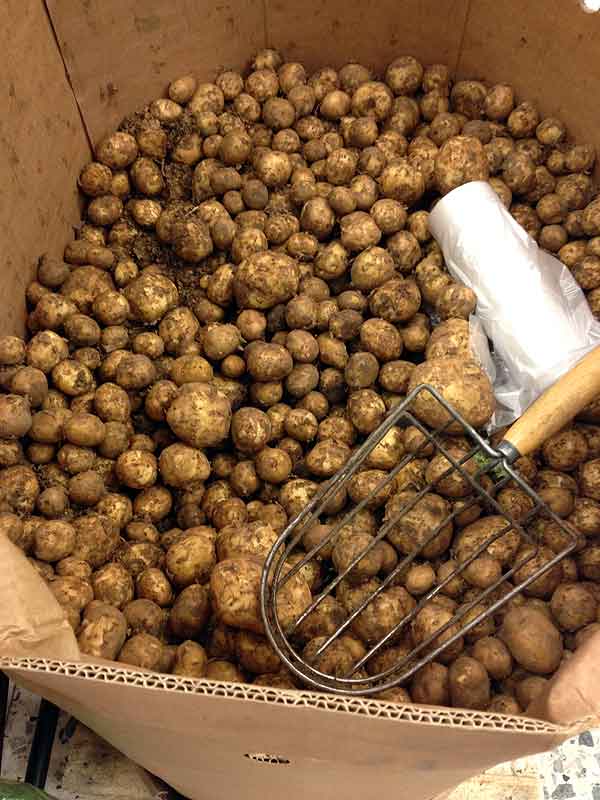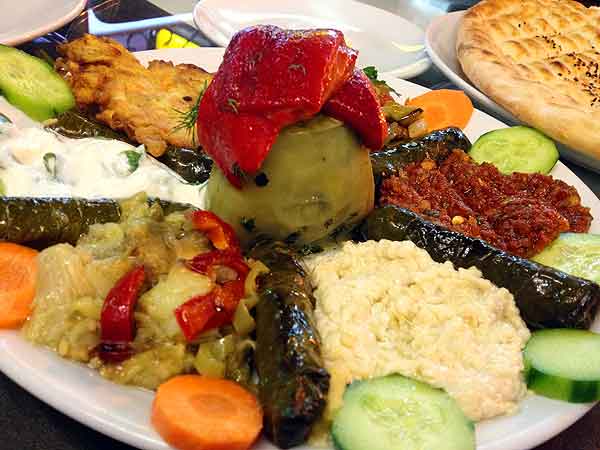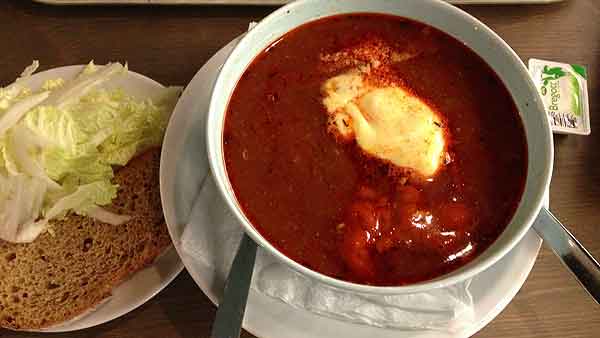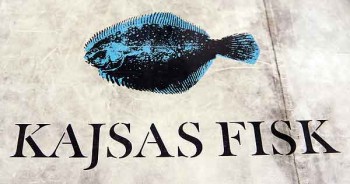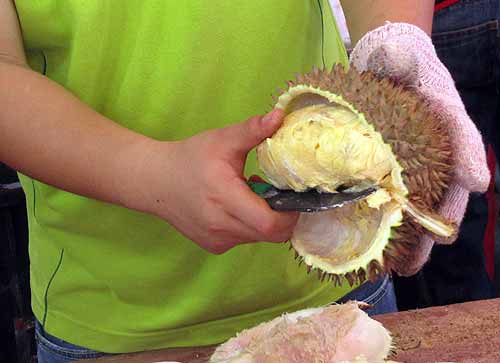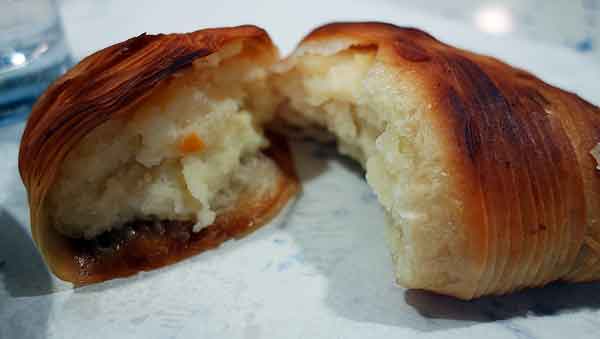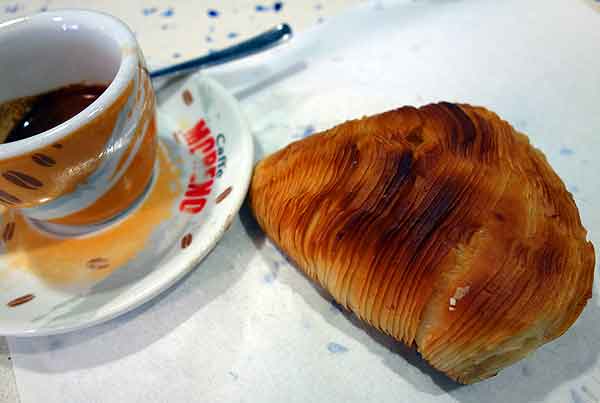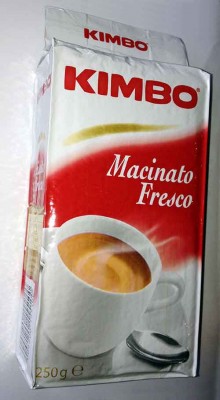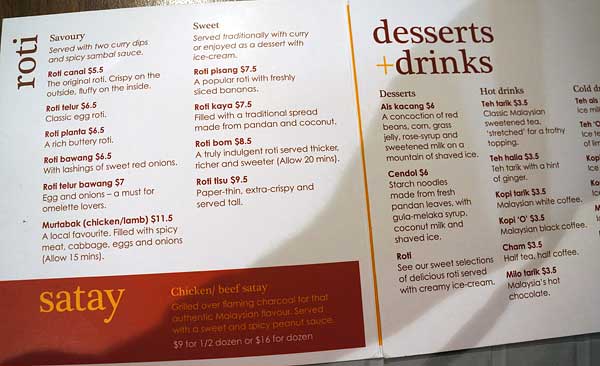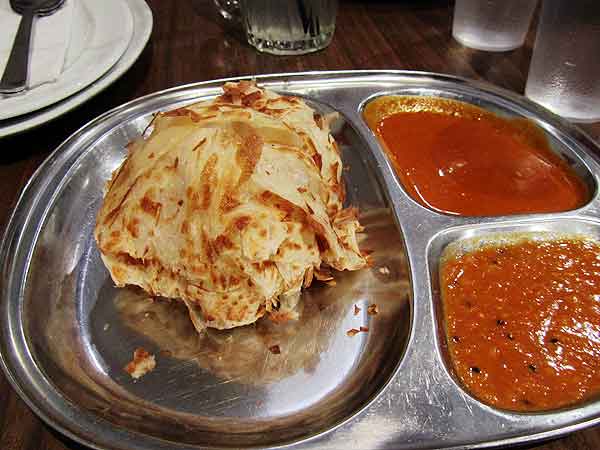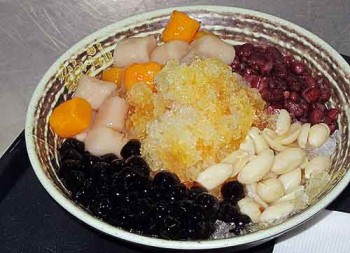Banana liqueur
You find the strangest things in airport lounges. Fancy banana liqueur?
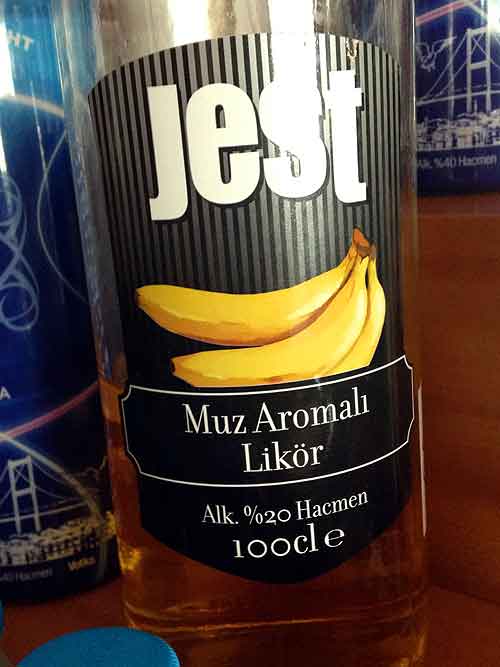
This was in the Turkish Air lounge in Izmir. Let me tell you: the Turkish Air lounge in Istanbul is fantastic! I love the cuisine of Turkey, and the lounge has a luscious sampling. In Istanbul, I want a long layover.
Of course I had to try the banana liqueur. Yep—very sweet. Probably mixes up well though, if you know what you’re doing.
Vodka and caviar in Russia
Vodka and caviar in Russia
Russian oligarchs suck billions of dollars from the national economy but leave lavish scraps to tease big bucks from high-end tourists. As trips to the region are being cancelled left and right, I’m looking back at my recent visit relying for sustenance on those extravagant scraps. Here’s to the past: dining like the oligarchs on vodka and caviar in Russia. A dis/tasteful extravaganza…
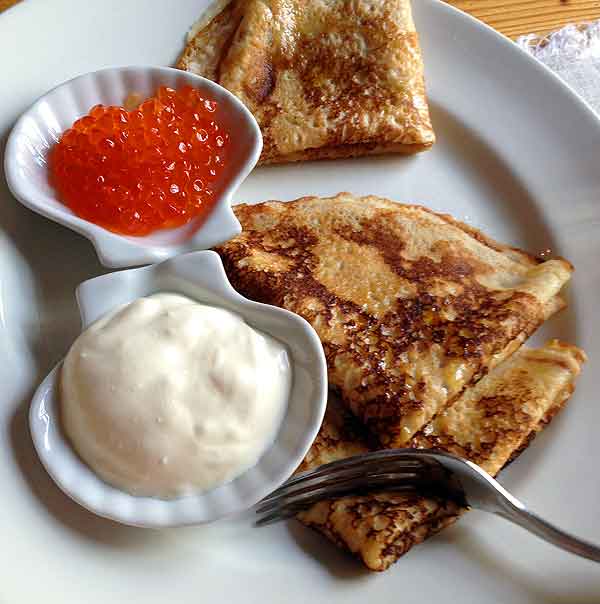
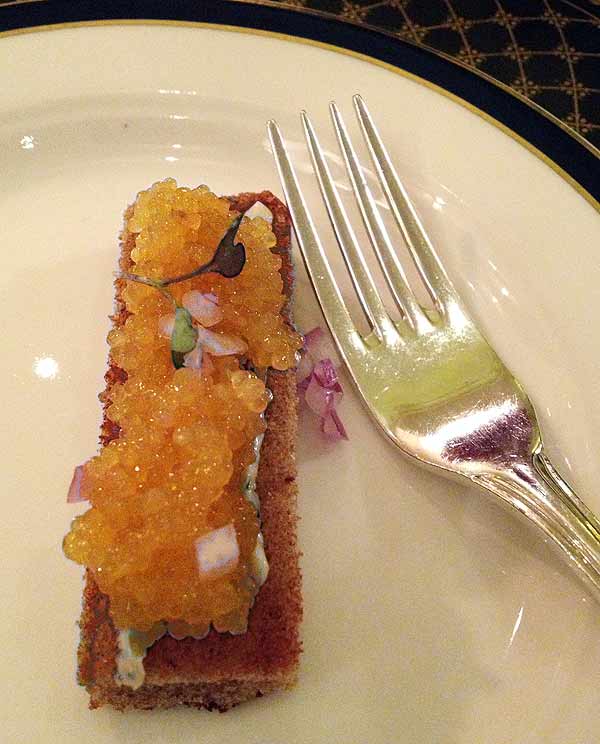
This was a favorite of mine (below): “Spirit of Russia Imperial Cocktail,” served at the Grand Hotel Europe in St. Petersburg. “A fine selection of the most famous varieties of caviar: beluga, ossetra, and red salmon caviar. Served on blinis with sour cream. Accompanied by a set of premium vodkas: Beluga, Tsarskaya Gold, and Russian Standard Platinum.
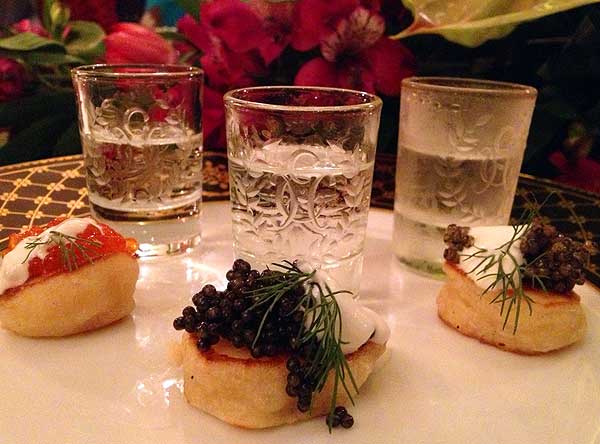
No, this was my favorite: “Egg in Egg.” An egg filled with truffle-scented scrambled egg, topped with ossetra caviar. Oh, yum! Also at the Grand Hotel Europe.
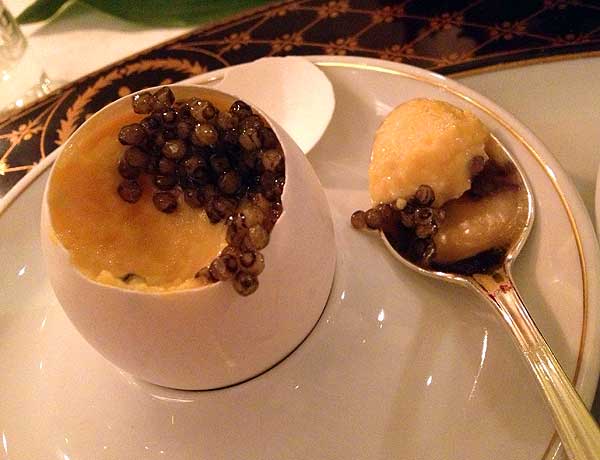
Outrageously delicious. Three varieties of caviar on silky, truffle-flavored scrambled egg.
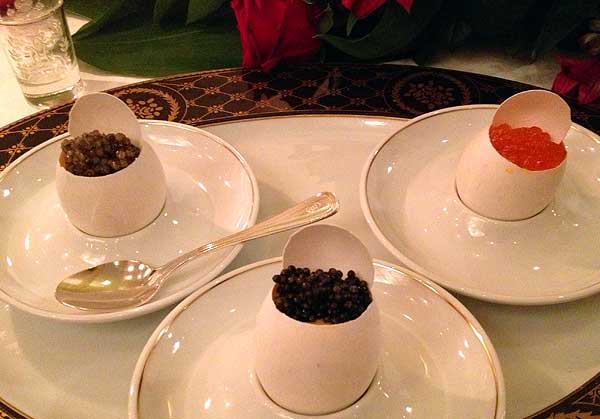
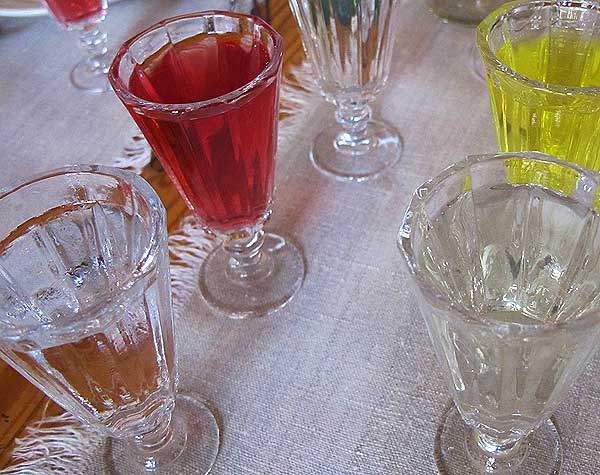

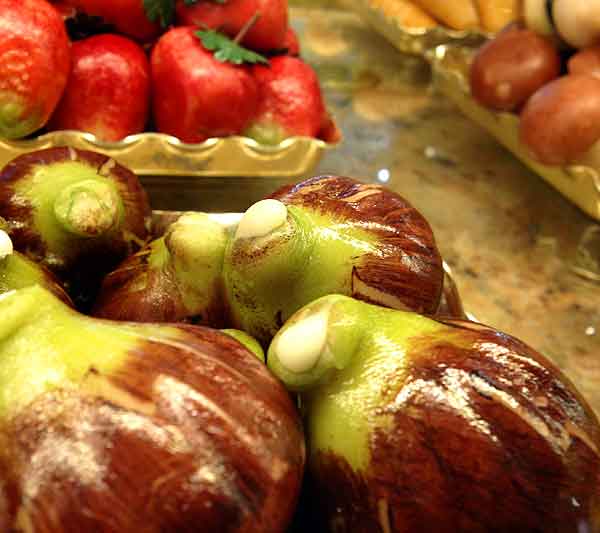
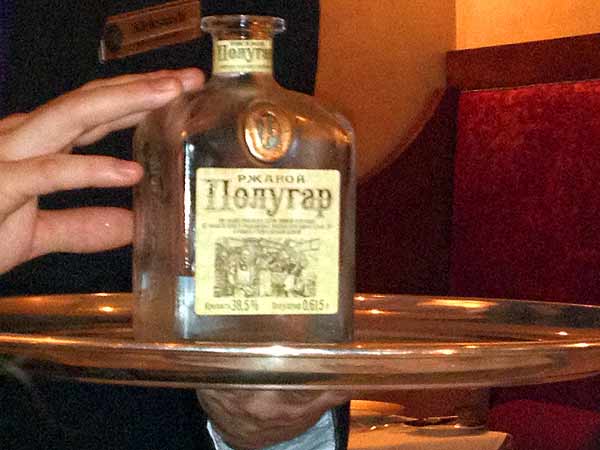
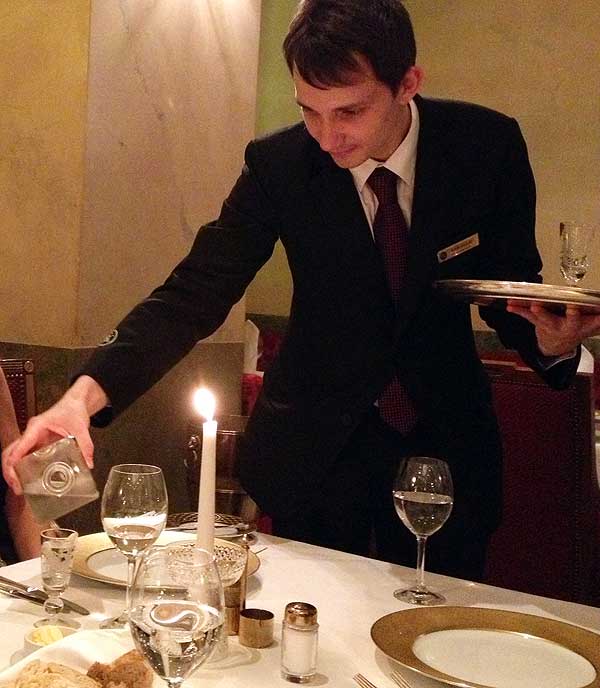
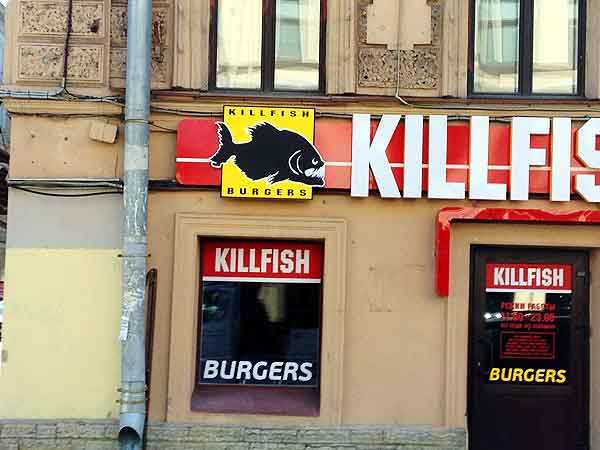
Why not read about the grittier side of Russia? Start with pickpockets in St. Petersburg.
Turkish counterfeits
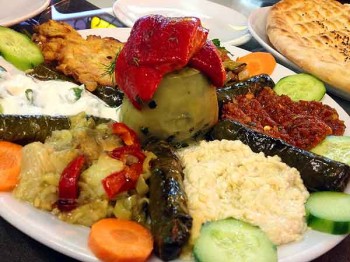
How one thing leads to another…
Bob and I were enjoying a delicious dinner in a small Turkish resort town. It was a balmy, late-summer evening and the restaurant was in a narrow alley; our table was outside, on the edge of light pedestrian traffic.
We had a beer and some raki along with this gorgeous mezze plate and warm bread fresh from the oven. I was hoping to save room for the oddly chewy Turkish ice cream, but that didn’t happen. We lingered, letting the meal stretch and be the night’s main event.
I noticed a large bottle fastened to the wall across the alley. It appeared to be a plastic water bottle. Why was it perched there so prominently? To hold flowers? rolled-up messages? a broom? It seemed to be partially full of something…
Eventually, I had to get up and go look. Bottle caps! It was about a quarter filled with blue plastic bottle caps. Why? I asked our waiter, who explained that when the bottle is full of caps, it could be traded in for a wheelchair. Huh.
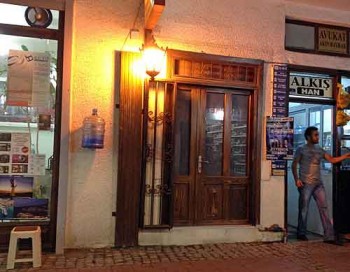
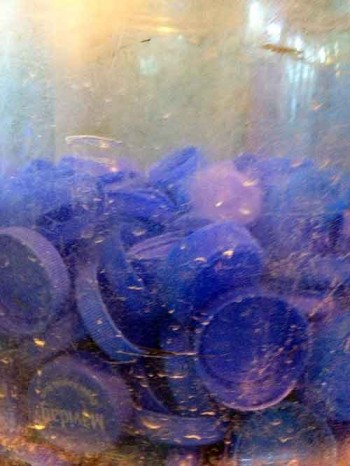
But, really? This seemed more like a hoax to me. Whatever…
As we considered the bottle on the wall across the alley, our focus shifted to the door at which it was mounted. It was an elegant entry surrounded by rich woodwork—at odds with the glass-fronted commercial establishments up and down the lane. It was warmly lit, while the surrounding shops flickered cool florescence. Could the doors lead to an upstairs guest house or hostel? We looked at the upper windows but could ascertain nothing. The glass doors were blacked out from the inside, reflecting alley activity, emanating mystery and privacy. This lent it a bit of foreboding, but that feeling was tempered and conflicted by the welcoming light. Come hither… stand back! Could it be an apartment house? The iron gate folded to the side implied a need for security.
After a while, it occurred to us that there was regular traffic into and out of the door. We hadn’t noticed at first, but once we began to pay attention, we saw that a couple or group would enter, then leave ten or fifteen minutes later. The visitors looked like tourists, not locals.
Again, we asked our friendly waiter. They sell copies inside, he said, knockoffs. But you have to know someone to get in. It’s the shop at the end of the lane. If you ask the right questions, you’ll be taken behind the wooden doors for the good stuff. He looked left and right, leaned in and whispered. No—just kidding.
Turkish counterfeits

When we finished our dinner we strolled to the shop at the end of the lane and asked what we thought might be the right questions. A boy brought us to the wooden door and gave a secret knock—the code! (Slight exaggeration here.) The door opened to a bright and immaculate shop. Its walls were lined with shelves of colorful leather bags, satchels, purses, and duffels. Its spotless marble floor reflected more of the same. Racks held belts, and a small section displayed red-soled Christian Louboutin shoes. The goods were branded Prada, Hermes, Gucci, Chanel… all the big expensive names.
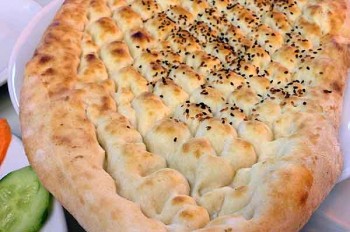
The quality seemed excellent. The prices were high—in the hundreds of dollars, but not the thousands. This lower-cost merchandise was likely made in the very same Italian factories as the legitimate designer items, from the same bolts of designer leather, cut and sewn by the same expert craftsmen. Read how counterfeit items are made in Italy and why they are for sale. Could these items have been made in Turkey, which has a thriving leather industry of its own? I doubt it. Could they be imitations from China? Not likely. I’ve been to the Beijing copy district, where shop after shop displays branded goods with impunity. Those items, while good, are churned out factory-like, without attention to precious detail as is the custom of Italian artisans. Or… perhaps in Beijing I didn’t know the right questions to ask.
Tokyo Narita Airport comfort
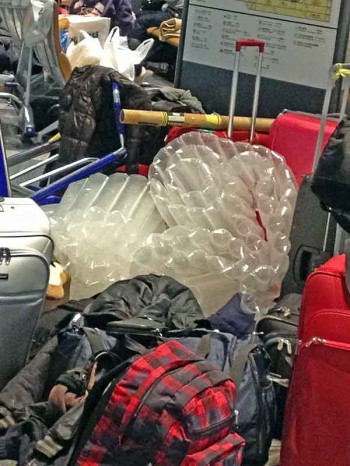
A jumble of travelers’ belongings and precious air mattresses.

The weather was terrible when we visited Japan last month. There was a whole inch of snow on the ground, and slushy puddles to slog through. It seemed Tokyo was unused to clearing streets and sidewalks. (I’d rather have slush than what I experienced on my March 2011 visit to Tokyo: the earthquake and tsunami.) Our drive to the airport, usually an hour, took three and a half due to closed and clogged roads.
But no problem: flights at Tokyo Narita had been delayed or cancelled. The airport was crowded with huddled travelers, their luggage piled neatly or jumbled. Our flight, too, was delayed, but only by a few hours.
Tokyo Narita airport comfort
We spent the time in a sushi restaurant where we had a mediocre meal and good wifi. Others were not so lucky, but luckier than delayed travelers elsewhere. Tokyo Narita Airport had kindly distributed lengths of air mattress, similar to bubble-wrap. People were sleeping on them, propped against pillows of the stuff, and covered by it. Creative families built tidy fortresses with floors and walls of air.
What a way to make a miserable situation a little more bearable.
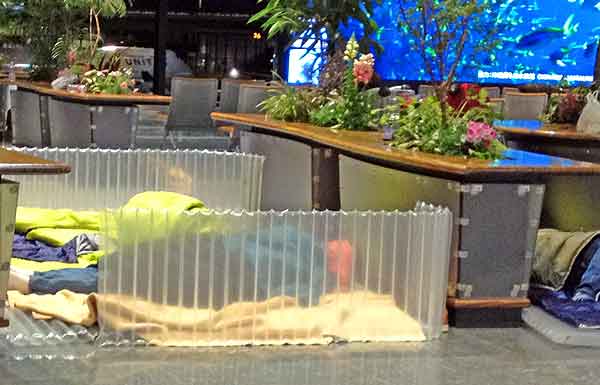
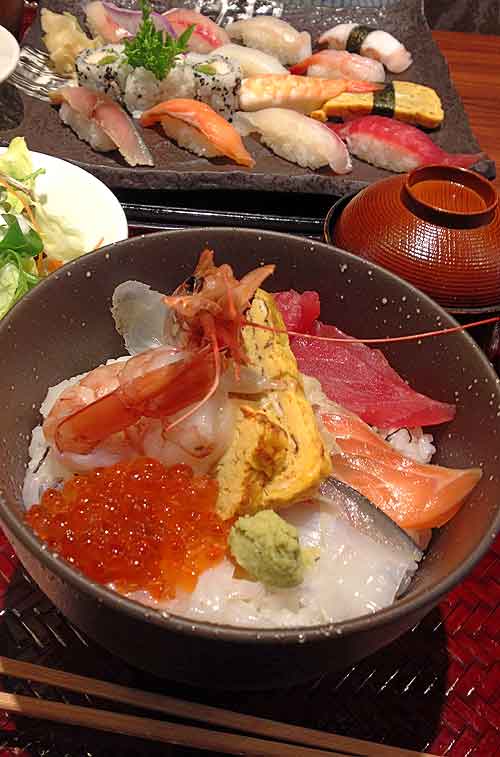
Kajsas fish soup, Stockholm
Kajsas fish soup
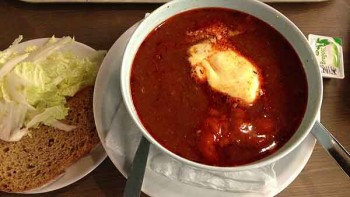
I dream of Kajsas’ fish soup! Since I started visiting Kajsas Fiskbistron (fish bistro) in the 90s, I always order only that. It’s a hearty red broth stocked with fish like a dude ranch pond. Miraculously, the large tender filets are boneless.
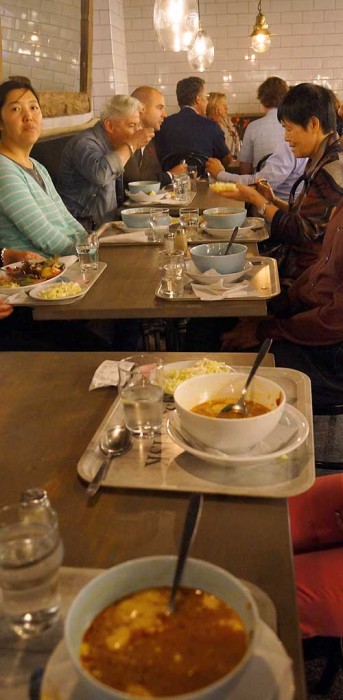
When you order, you say yes or no to additional spoonfuls of cooked shrimp (yes!), shelled mussels (yes!), and aioli (absolutely!). Then you add your own double-dollop of harissa (spicy Moroccan chili paste) (essential!). Feast in a bowl!
The free “salad,” on my last visit a few days ago, was shredded napa cabbage, a nice, crunchy complement. I seem to remember other simple salads on other visits, but you don’t go for the salad. Bread is included, and so is water.
You can order other seafood dishes, but why? Plenty of tasty choices are on the blackboard menu, but only a few people seem to order them. They must be frequent visitors who work nearby. Just get the fish soup and swoon. There’s a bar, too, so you can have a beer with it if you like.
Located inside a top-quality food hall, Kajsas must source its fish from the neighboring seafood dealers—I’m presuming here—or maybe the restaurant buys from the same fishmongers the neighbors do. Regardless, you imagine you’re eating the fishermen’s own stew.
I love the atmosphere, even though the place is indoors, underground, in a market, with a giant, shiny Patagonian toothfish staring at me from between the octopus and baby squids in the glass counter across the aisle. It’s not romantic or scenic or high-design—just authentic, unpretentious, and efficient.
Kajsas Fiskbistron is in Hötorgshallen, in Hötorget, Stockholm. Take the escalator down to the food hall. Fish soup is SEK 90, about $14 with everything (at today’s exchange rate).
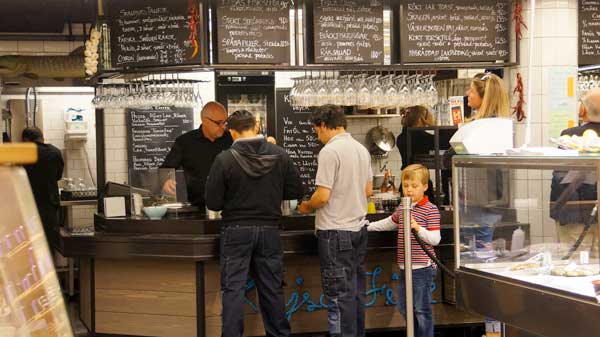
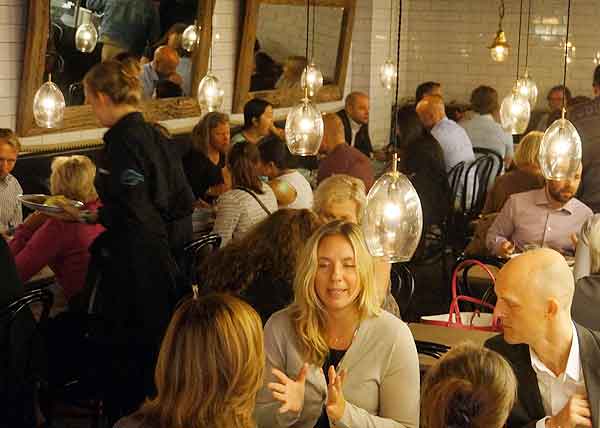
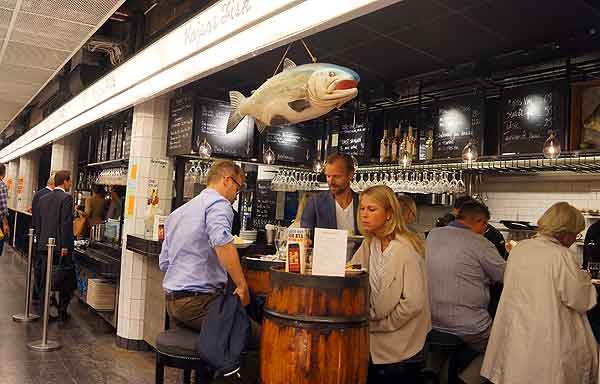
Durian, the fragrant/foul fruit
Durian.
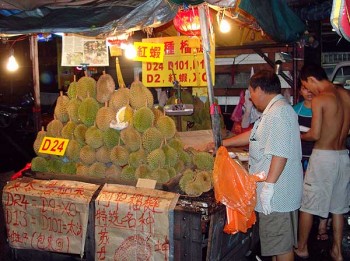
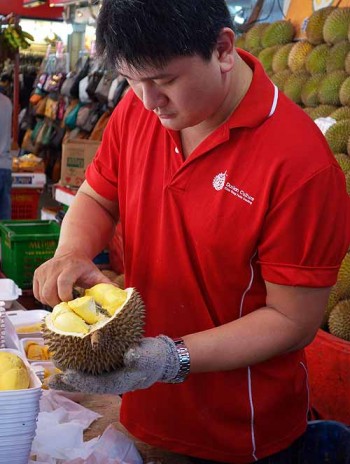
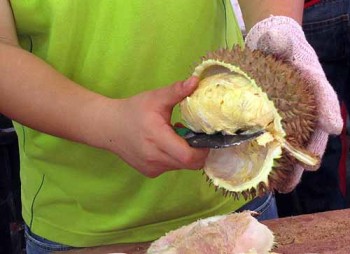
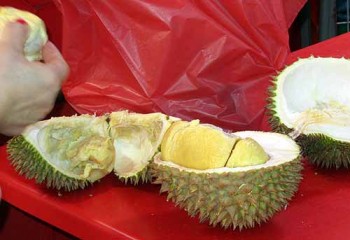
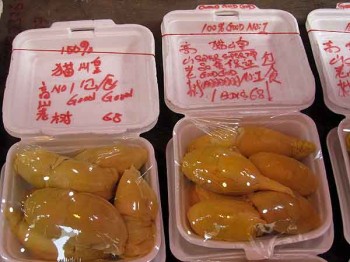
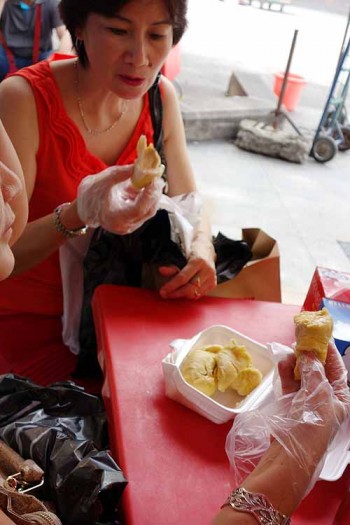
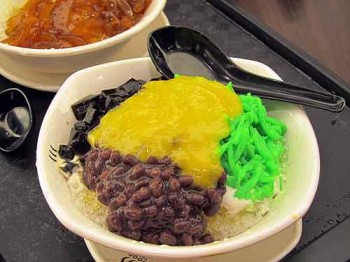
You love it. You hate it. Or you’ve never had it. This powerfully-fragrant fruit from Southeast Asia is considered so foul-smelling by some people, they say they hate it even though they can’t bring themselves to taste it.
All I can say is: poor them. I’m obviously in the love-it camp. I can smell it from blocks away and am magnetically drawn to the stand like a bee to honey or a fly to… well, I’ll leave the similes to you.
Durian flesh is intensely sweet but at the same time, delicately flavored. Its creamy-custardy consistency can be firm to soft, and has a silky texture. Surely one of nature’s strangest inventions, its surprising, delicious interior is protected by multiple barriers. If its odor doesn’t put you off, its dangerous thorns might. And how do you crack the thing, anyway. All messages are: stay away!
Unless the fragrance entices…
The football-shaped durian has a thick spiked shell. If it weren’t so heavy, it would be a formidable weapon. Durian professionals wear an armored glove on one hand, and wield an evil-looking knife or cleaver in the other. The soft interior segments are gently prized out and arranged in a styrofoam box, where they look not unlike an undercooked omelet, or piece of raw chicken fat. Ready-to-eat durian will not win a beauty contest no matter who are the other contestants in the fruit-world. It beckons with its fragrance. By necessity, it must. A feast for the eyes, it isn’t.
I don’t know the qualifications the durian man uses to grade his fruit, especially without tasting it. Maybe they’re meant to remain a mystery. But wherever durian is sold, a range of qualities is on display. The priciest are often noted with a number of exclamation points: “best quality!!!” I’ve seen styrofoam boxes of durian ranging from about $3 to over $60. Locals scrutinize the offerings with serious concentration and buy the best they can afford.
Other durian stands sell the whole, uncut fruit. How does the buyer choose? Locals I have dined on durian with answer ambiguously.
Ladies-who-lunch and professional women visit the durian man in small groups. After selecting, they take their box to a plastic table, pull disposable gloves over their nails and jewelry, and dig in with their hands. I like the dichotomy: these elegant women visit their local supplier to quell a craving, get a quick and messy fix, then peel off the gloves, pop a breath mint, and slip back into society. The aroma will stick to them like illicit cigarette smoke.
Before I knew better, I bought durian and tried to take it home on a bus. This was in Singapore. It only took a few minutes before the bus stopped and I was ejected with my plastic bag. A taxi grudgingly drove me, but only with all its windows open despite the high temperature and humidity.
I ate too much durian in Bangkok one time and got what I later learned is called “hot tummy.” I felt light-headed, too, and had to take a tuk-tuk back to the hotel. Bangkok traffic is legendary—not even a little tuk-tuk can move quickly through it. The carbon monoxide fumes made me feel even sicker, but by the time I got back to the hotel, my hot tummy had cooled.
It seems you can now get durian in New York City, though I wonder how fresh they are. What is the shelf-life of an unfrozen durian? They’ve got to be frozen. If the NYC supply has been frozen, I’d stay away. They’d certainly not be suitable for a first introduction.
In Southeast Asia, when fresh ones are not available, I’m very happy with a durian shake. Durian cakes and custards are okay. Nothing beats the iced malaysian dessert durian chendol. I dream about it.
Pizza fumé
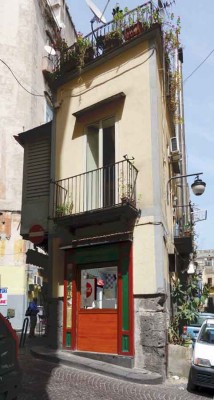
Sounds good, but it’s not what you think if you’re imagining a fragrant, wood-smoked Margherita pie.
Back in Naples, lunching at the tiniest pizza joint in the hillside Quartieri Spagnoli district. The “restaurant” is just an itsy-bitsy kitchen in a narrow building, with standing space for two men. It has one table—outside—with two chairs. We’re three. We try two on one chair, but it’s too hard to eat pizza that way. Pizza requires elbow room. So one of us stands.
The table is actually in the street, on a three-way corner. And though the street is narrow, it buzzes with disorderly traffic like a major thoroughfare. A steady stream of cars, motorbikes, and delivery trucks maneuver around us with only inches to spare.
The carbon monoxide fumes mingle with the vehicular honking and motorbike beeping to relegate this meal to the “fuel” category. And by that I mean the fuel-flavored pizza soothes our hunger pangs and provides energy. The “delicious” factor would be found later, over the unique coffee of Naples, and sfogliatella.
Not to disparage the thin- and chewy-crusted pizza or the quality of its tomato, mozzarella, and olive oil. But it was impossible to appreciate under the circumstances.
As take-out, though, this pizza place might really rank.
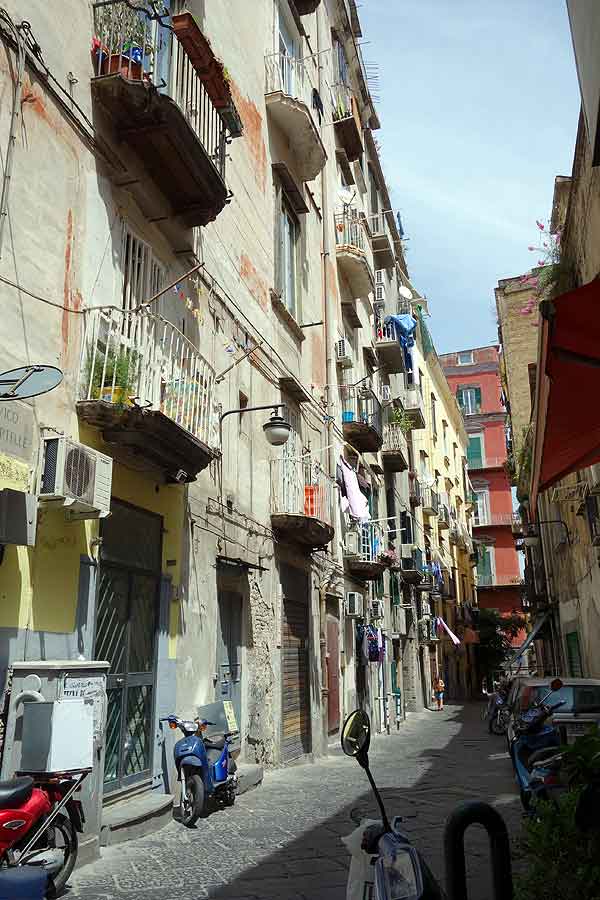
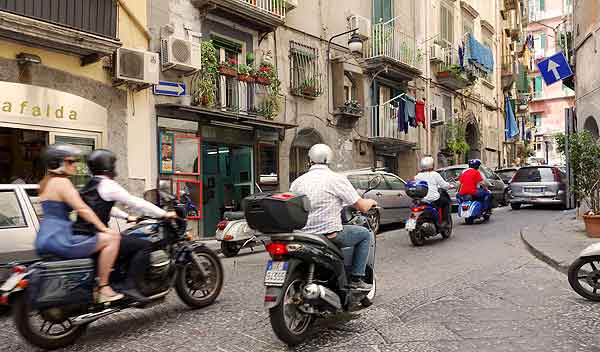
Sfogliatelle!
If this doesn’t make you drool, well, try the lower photo. Sfogliatelli must be the most exquisite pastry ever invented. Found only in Naples, Italy, unless you know the few secret bakeries beyond that make or import this special treat. The one pictured above is a two-inch giant (but not too much to eat, no!). I prefer the smaller version—then I can eat them twice as often!
The crisp, flakey pastry holds a delicate, aromatic surprise:
a creamy ricotta filling, only slightly sweet, scented with bits of candied orange rind.
Sfogliatelle Mary, the most famous purveyor, doles them out warm, as they should be. Powdered sugar is an option—unnecessary in my opinion. All that’s needed is coffee which, in Naples, is the smallest, darkest, strongest, richest of any I’ve had anywhere. I can’t bring home sfogliatelli, but I always have a pound or two of Caffè Kimbo stashed in my luggage.
Sfogliatelli make me happy. They make me happy to visit this unique part of Italy. I especially like place-specific delectables, and I even like that they must be enjoyed in their native locale.
Oh, I can smell the warm, delicate orange perfume, I can taste it, I can hear the pastry crackle as I bite through the hundred paper-thin layers. But where great things lurk, confusion abounds, waiting to trip us up. Be sure you get “sfogliatella riccia,” and not the vastly inferior, unflakey sfogliatelle frolla. Perfection in a pastry.
Mamak Malaysian restaurant, Sydney
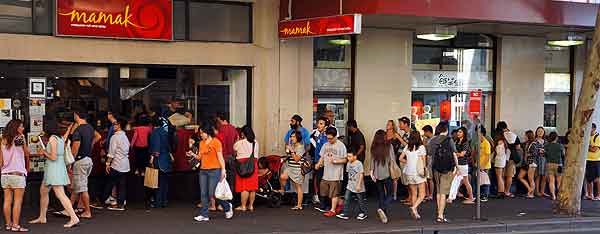
Mamak is worth standing in line for. Bob and I waited 50 minutes for what is actually rather ordinary Malaysian food. But you can’t get these dishes just anywhere, and here, they’re done to perfection. I’d call this restaurant perfect in every way my single visit allowed me to experience. Let’s start with the entertainment on offer…
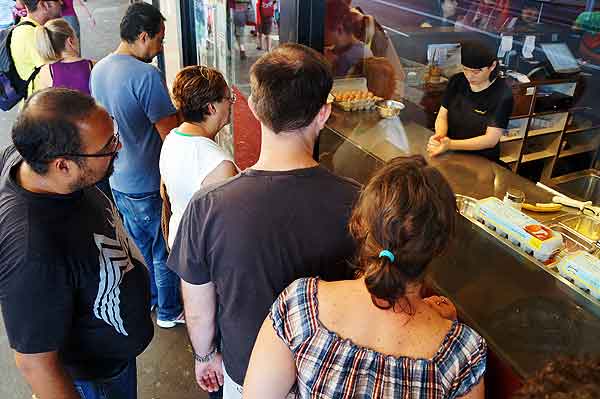
After standing in line for 30 or 40 minutes, you finally creep up to the glass wall of the kitchen. Two roti-makers work like machines at their stainless steel counter, stretching small balls of dough by flinging them over their heads until they look like giant, translucent handkerchiefs. You just know one is going to become a kite and sail onto the head of a grill cook. Or one will rip and fly into shreds. They never do. After the final toss, the dough lands on the counter stretched into the size of a sheet of newspaper.
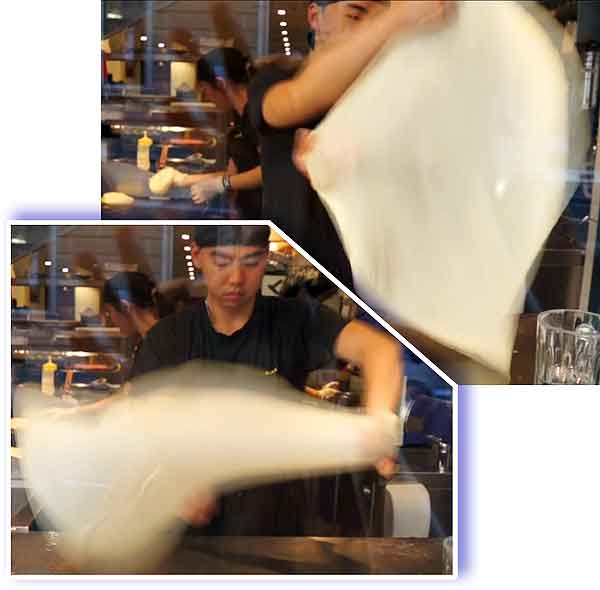
That’s when the roti is given it’s specific form. It might be quickly folded into an air-filled pillow and simply thrown on the grill, where cooks hover over the rotis, pressing them, flipping them, and rushing them off to drooling diners. Or the dough might first get a sprinkling of red onions. Bob and I ate rotis often when we lived in Singapore. In their most basic form, they’re simple flat breads served hot off the grill with a bowl of curry sauce for dipping.
A filled (and filling) version is called murtabak. An egg is broken onto the stretched dough, which is then topped with a smear of curry sauce, a toss of onion shreds, and possibly shredded chicken, mutton, or sardines. The gossamer dough is folded into a many-layered square, cooked on the grill, and served steaming hot with a bowl of spicy curry sauce. Perfection! Mamak serves murtabak. I wish I could have tried it, but we ordered other items.
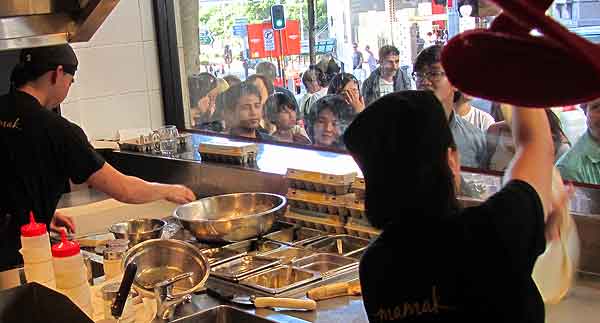
I’d gotten a menu to look at while in line, so we’d be ready to order right away. That’s the one tiny improvement that could speed Mamak’s turnover just a tad: menus outside so diner’s can use the waiting time to peruse the offerings.
When you finally enter the restaurant, all primed for a roti (but which one???), the fragrance of baking bread slays you. The urgency of the cooks and waiters increases your heart rate and your stomach announces its presence and desires. Luckily, Mamak is fast! Your order is in and out in moments.
Mamak cooks a small selection of Malaysian dishes (most of which are traditional street foods) which keeps the menu from overwhelming people unfamiliar with the cuisine. They do a variety of rotis, two kinds of satay, several curries and stir-fries, and spicy-fried chicken. There’s the classic nasi lemak, which is fragrant coconut rice with condiments (which we ordered), and a couple of fried noodle dishes.
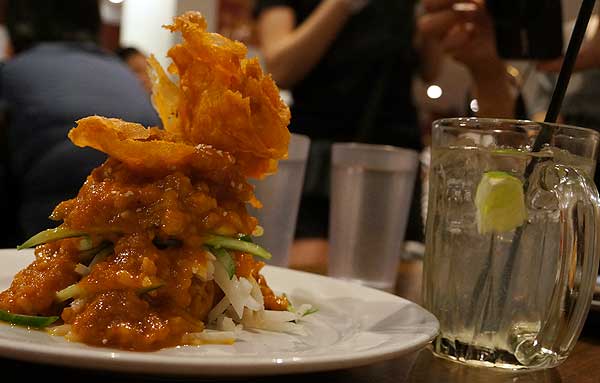
We also ordered rojak. I’ve had it many times in Singapore, but never like Mamak’s. Typically a salad of crisp and crunchy fruits and vegetables, julienned yambean and cucumber, fried tofu, and prawns, it’s coated with a spicy peanut sauce and garnished with hardboiled eggs. Mamak’s version was heavy on the sauce, sweet, tall, and… delicious.
Crisp and fluffy roti cania looked to be the most popular item on the menu. So simple, yet so satisfying. You lick your finger to pick up every last flake of the toasty bread.
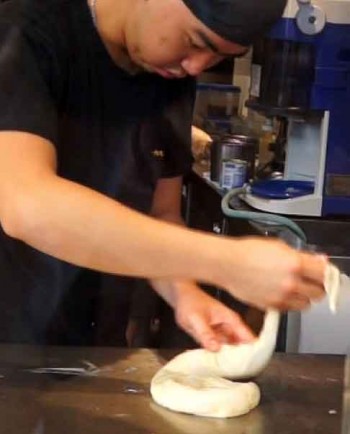
The rich and exotic roti planta requires a time-consuming process. Twenty or so little dabs of butter are spaced out along one edge of the stretched dough sheet. The sheet is then rolled into a lumpy, air-filled snake, the buttery dots along its length like undigested mice. The fragile tube is then carefully coiled like a sleek-skinned cobra, and set on the grill to crisp, melt, sizzle, and brown.
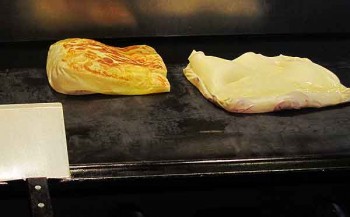
Mamak also offers a variety of Malaysian tea and coffee drinks, and two typical desserts: ice kachang and chendol. I ADORE chendol, a complicated ice dessert composed of many ingredients. Instead of trying it here though, Bob and I chose to go next door to the Taiwanese dessert shop called Meet Fresh. Yeah, funny name! I got “handmade taro-balls #4” with peanuts (soft), pearls, and red beans. I could have ordered it hot, but chose to have it over ice. Bob got mango sago coconut soup.
Taro-balls #4 was nice, but it’s no chendol. Come to think of it, chendol needs a post of its own. I dream of chendol, but only a certain kind. It must be topped with one particular fruit. I will tell you… soon!
In addition to the selection and quality of its food, Mamak gets a gold star for speed. Our meal arrived eight minutes after ordering it. When we left, the line was as long as when we got into it an hour and a half earlier. And guess what? After we finished dessert next door? Yep, the Mamak’s line was even longer.
On Goulburn at Dixon in Haymarket, on the edge of Sydney’s Chinatown, Mamak is a winner.

